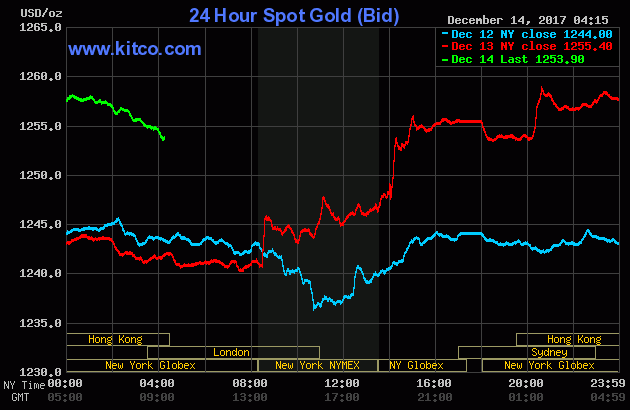Yesterday, the Fed released its most recent monetary policy statement. How can it affect the financial markets?
In line with expectations, the Fed raised the federal funds rate target by 25 base points to the 1.25-1.50 percent range. This way, the U.S. central bank delivered the third hike this year, and the fifth rate increase in the post-crisis period. The most important paragraph of the released monetary policy statement is, thus, as follows:
In view of realized and expected labor market conditions and inflation, the Committee decided to raise the target range for the federal funds rate to 1-1/4 to 1 1/2 percent. The stance of monetary policy remains accommodative, thereby supporting strong labor market conditions and a sustained return to 2 percent inflation.
However, there were also other changes in the statement. First, the FOMC altered the statement language about the labor market outlook, as it replaced the view that “labor market conditions will strengthen somewhat further” with the opinion that “labor market conditions will remain strong”. It suggests that the Fed expects the pace of job gains to moderate over time. Second, the U.S. central bank dropped the mention of the unwind of its balance sheet. Third, Charles Evans and Neel Kashkari dissented, as they preferred to maintain the federal funds rate unchanged. As a reminder, they will exit the voting group of the FOMC next year, so the committee will turn more hawkish in 2018.
To not disrupt the structure of interest rates, the U.S. central bank also lifted its other interest rates by 25 basis points. In particular, as we can read in an implementation note, the Fed raised interest paid on required and excess reserve balances to 1.50 percent, the overnight reverse repo rate to 1.25 percent and the discount rate to 2.00 percent. The decision to raise interest rates was widely anticipated, so it should not alter the markets significantly.
But the Summary of Economic Projections surprised the investors, as the FOMC members left the federal fund rate outlook for 2018 and 2019 unchanged (but added an extra quarter rate hike in 2020). The decision is a bit puzzling. Although the committee did not change its inflation outlook, the U.S. central bankers reduced the unemployment rate projections and lifted the real GDP growth rate over the next three years. Hence, some changes in the expected path of interest rate hikes would be justified.
To sum up, the Fed delivered the fifth rate hike in this tightening cycle, as expected. However, the U.S. central bank did not change its interest rates outlook, which means that it remains on course to raise interest rates three times in 2018. We will analyze the press conference in more detail in the near future, but we can say that the December 2017 FOMC meeting was more dovish than expected, on balance. It’s good news for the gold market. Indeed, the U.S. dollar depreciated against its main peers, and the price of gold rose yesterday, as one can see in the chart below.
Chart 1: Gold prices over the last three days.

Hence, we see a replay of 2015 and 2016. The Fed delivered a hike in the last month of the year, but the move was accompanied by a dovish outlook. In a sense, the changes in the FOMC projections are far from being dovish: the U.S. central bank cut the expected unemployment rate, boosted real GDP growth projections and even added one interest rate hike in 2020 (we will elaborate on this in the upcoming editions of the Gold News Monitor). But it did not change its expected path of interest rates in 2018 and 2019, which was interpreted as dovish. If this interpretation prevails, gold may shine – if history is any guide, the price of the yellow metal should rally after the December FOMC meeting. However, history never repeats itself exactly, and investors should not forget that due to the all personal changes, the FOMC voting group is likely to be more hawkish next year. Stay tuned!
If you enjoyed the above analysis, we invite you to check out our other services. We focus on fundamental analysis in our monthly Market Overview reports and we provide daily Gold & Silver Trading Alerts with clear buy and sell signals. If you’re not ready to subscribe yet and are not on our gold mailing list yet, we urge you to sign up. It’s free and if you don’t like it, you can easily unsubscribe. Sign up today.
Disclaimer: Please note that the aim of the above analysis is to discuss the likely long-term impact of the featured phenomenon on the price of gold and this analysis does not indicate (nor does it aim to do so) whether gold is likely to move higher or lower in the short- or medium term. In order to determine the latter, many additional factors need to be considered (i.e. sentiment, chart patterns, cycles, indicators, ratios, self-similar patterns and more) and we are taking them into account (and discussing the short- and medium-term outlook) in our trading alerts.
Thank you.
Arkadiusz Sieron, Ph.D.
Sunshine Profits‘ Gold News Monitor and Market Overview Editor
Gold News Monitor
Gold Trading Alerts
Gold Market Overview



